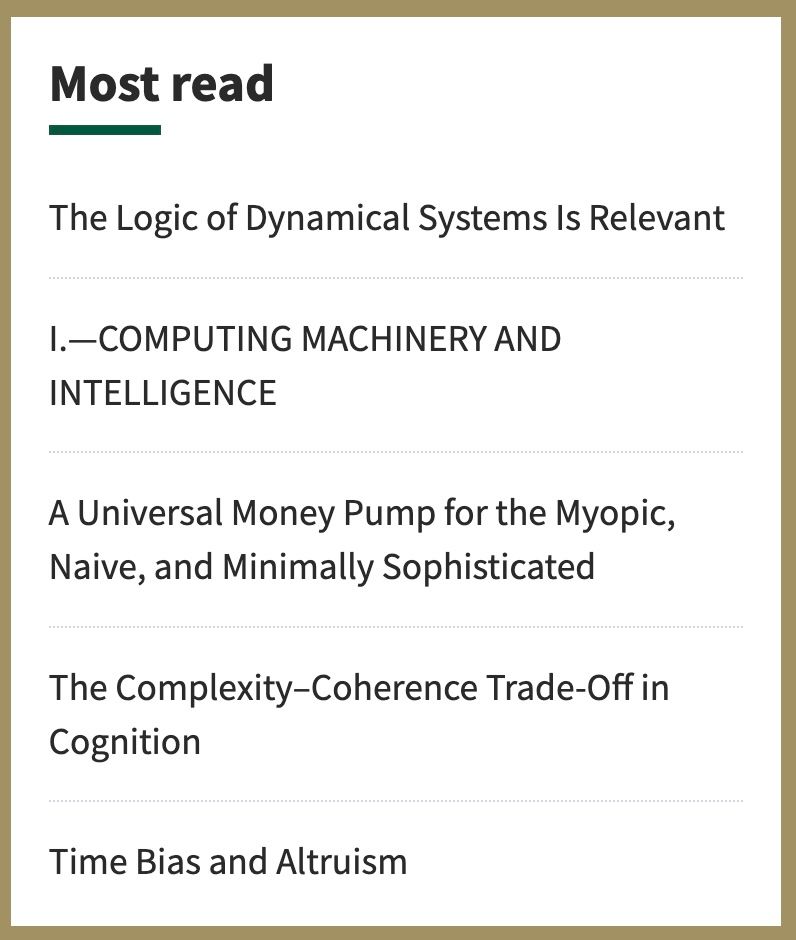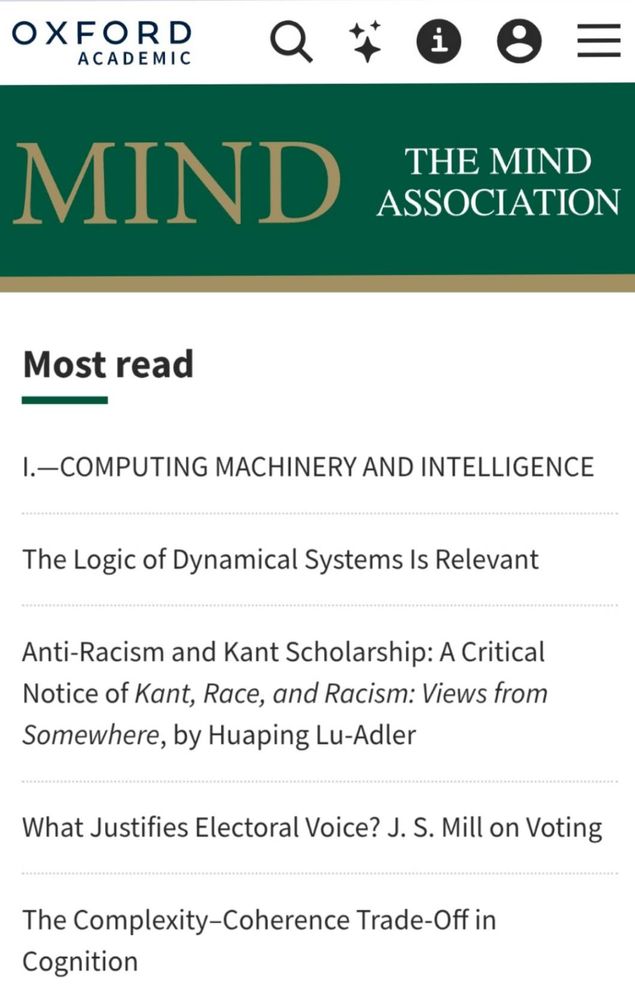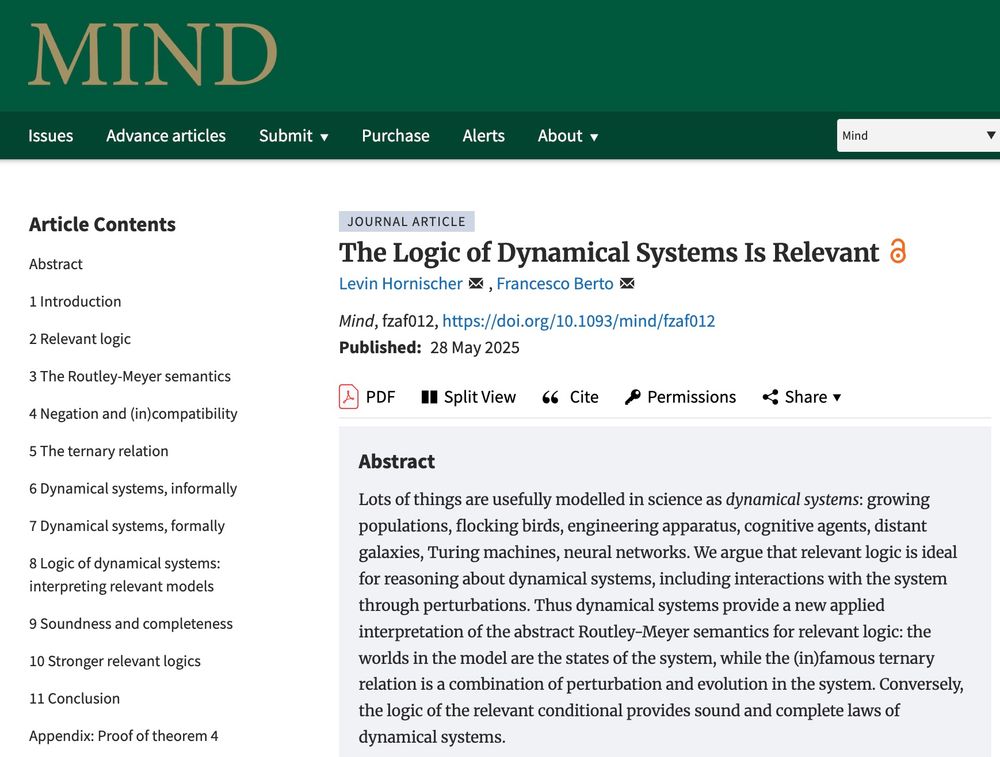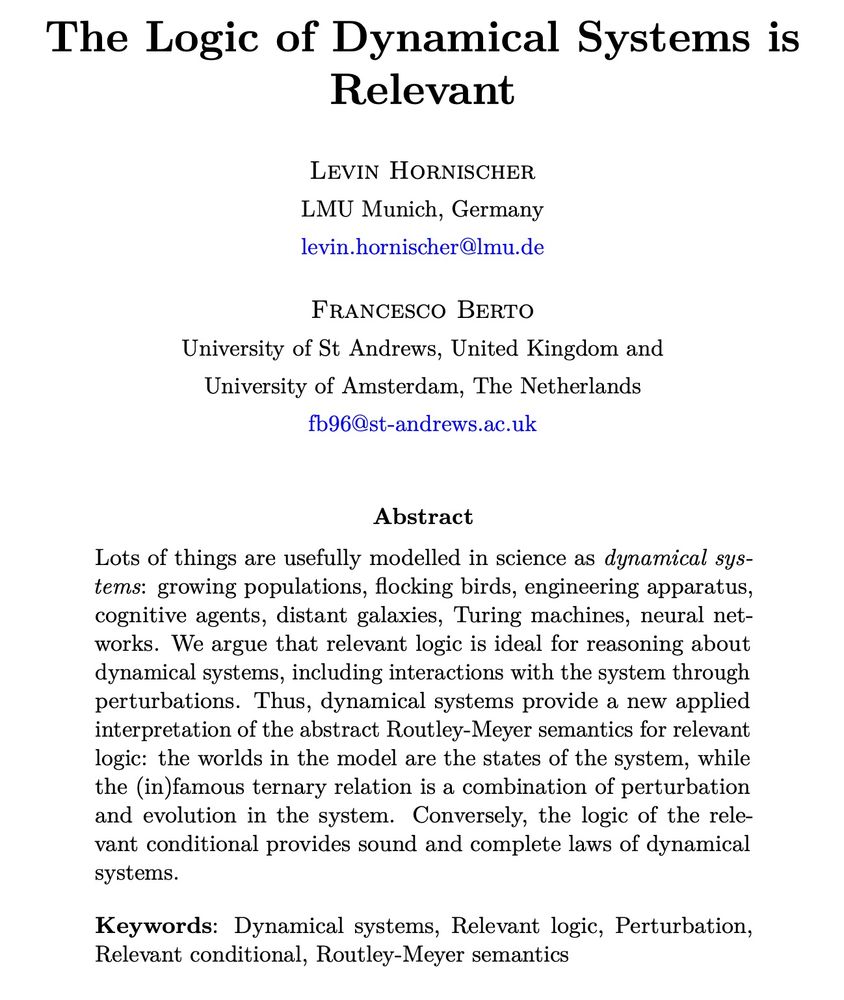Levin Hornischer
@levinhornischer.bsky.social
210 followers
130 following
6 posts
Assistant professor at LMU Munich, MCMP (Munich Center for Mathematical Philosophy). He/him.
Working on: foundations of AI, logic, dynamical systems, semantics, epistemology.
https://levinhornischer.github.io/
Posts
Media
Videos
Starter Packs
Reposted by Levin Hornischer
Reposted by Levin Hornischer
Reposted by Levin Hornischer








